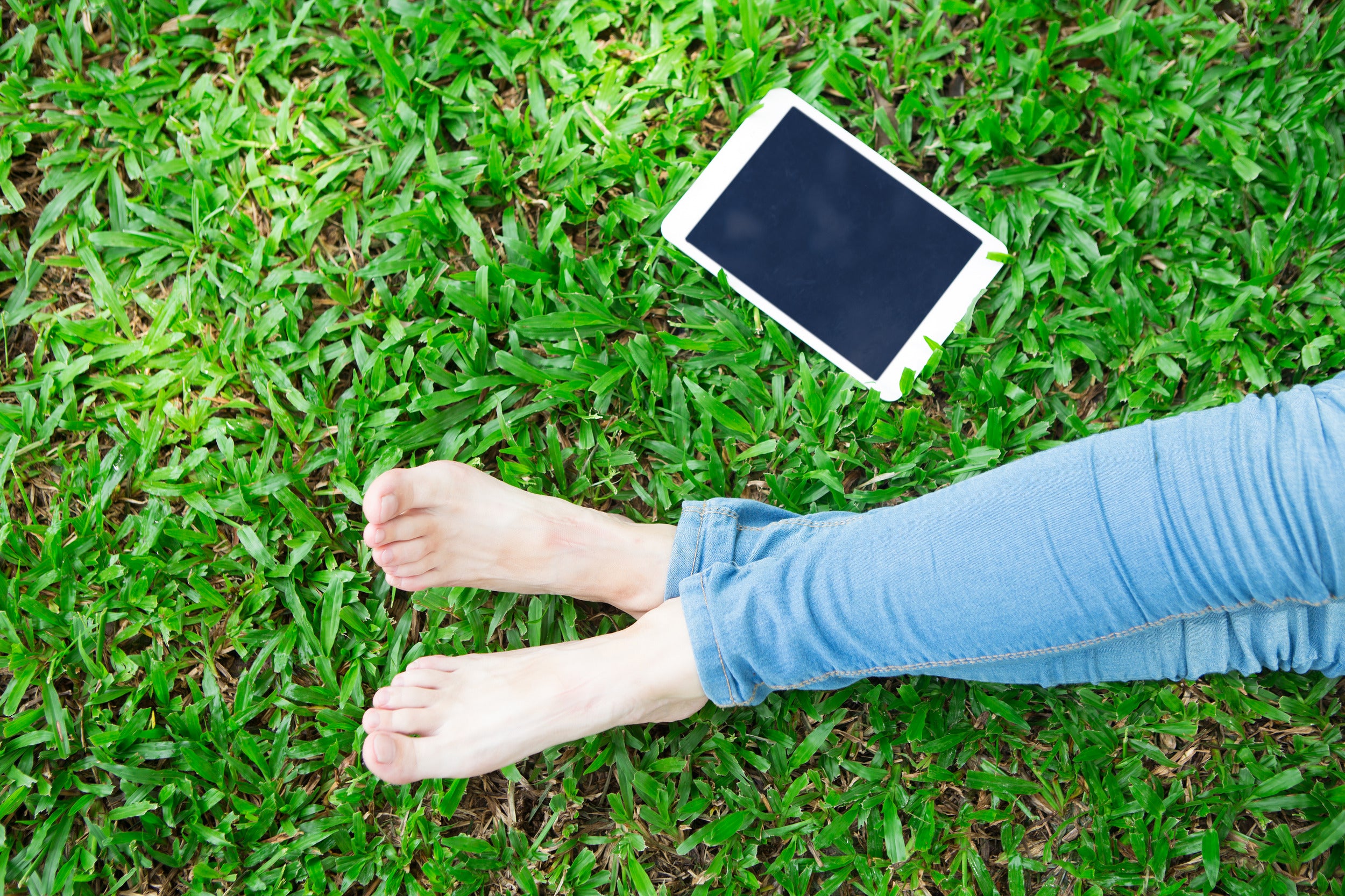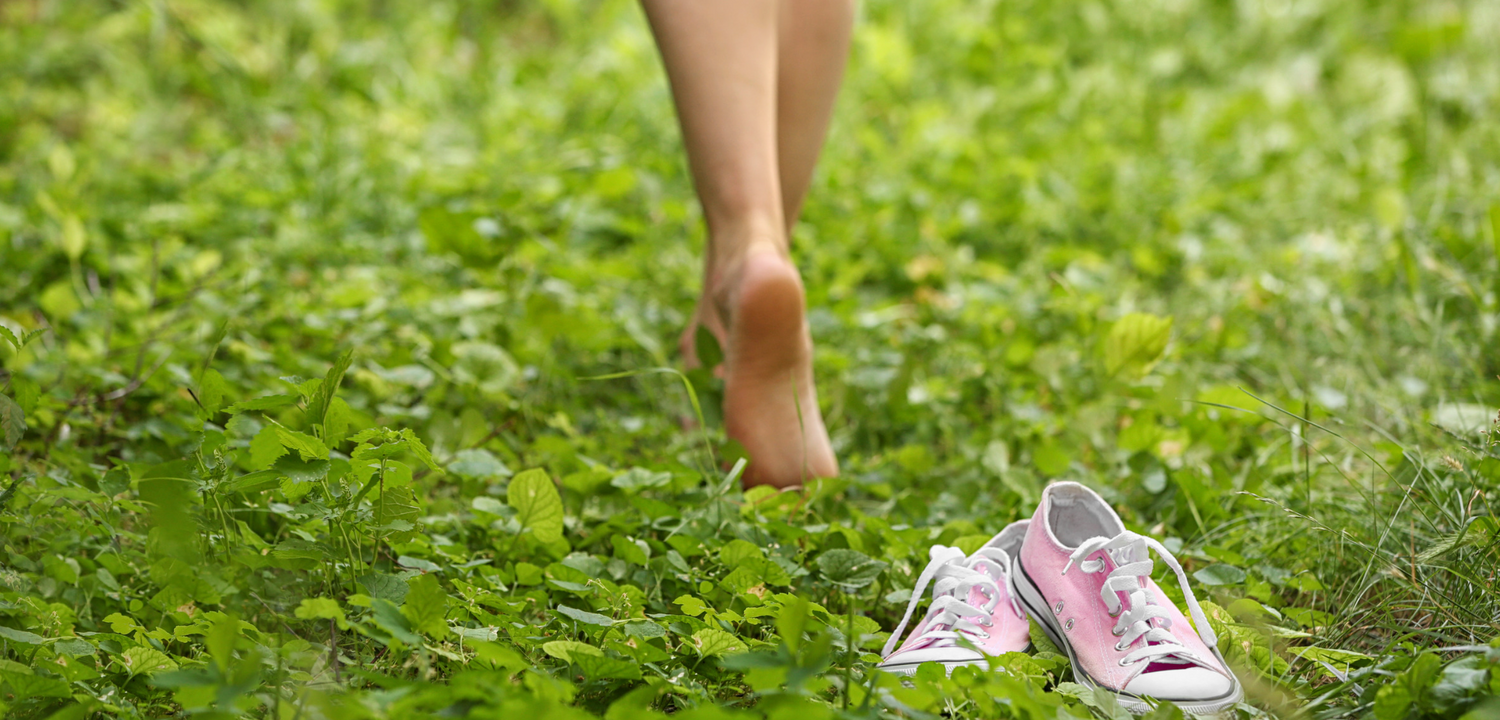
What is Grounding?
Grounding, also known as earthing, is the practice of reconnecting your body with the Earth’s natural energy.
Modern life keeps most of us indoors and surrounded by electronic devices, which can make it harder to feel balanced.
Grounding is a simple, natural way to reconnect with your surroundings and feel more balanced — wherever you are
When you walk barefoot on grass, soil, or sand, you experience grounding directly through contact with the Earth. A Grounding Mat allows you to enjoy that same connection indoors — while you work, relax, or sleep.
👉 Learn more about Grounding for Sleep

How does Grounding work?
The Earth carries a subtle, negative electrical charge composed of free electrons. When skin makes contact with conductive earth-connected surfaces, many people describe feeling more balanced or centred when connected to this natural energy.
While researchers continue to explore grounding’s relationship to comfort and balance, grounding mats are designed to replicate the feeling of outdoor contact — allowing you to stay connected indoors without disrupting your routine.
Why People Practise Grounding
Grounding is often described as a centring, mindful experience that encourages balance and relaxation.
People who include grounding in their daily routines often describe:
- Feeling calmer and more centred
- Creating a peaceful environment before bed
- Feeling more present and focused during the day
- Adding a simple, natural ritual to their home wellness routine
Grounding is not a medical or therapeutic treatment — it’s a gentle lifestyle practice that helps you reconnect with the steady rhythm of nature.
Discover more on the Benefits of Grounding

A Simple Grounding Practice
You can try it out for yourself right now.
Step outside, take off your shoes, and walk barefoot on the grass.
After just a few minutes, you may start to notice a sense of calm or lightness — a simple reminder of how naturally connected we are to the world around us.
Across many cultures, the practice of spending time close to the Earth has long been valued as a grounding and peaceful experience. In the 19th century, German naturalist Sebastian Kneipp even encouraged barefoot walking as a way to reconnect with nature’s grounding energy.
Today, most of us spend our time indoors, separated from that connection by shoes, flooring, and technology. Grounding offers a gentle way to bring that sense of connection back into daily life. When we make contact with the Earth — or use a grounding mat indoors — we reconnect with the planet’s natural flow of energy, which many people find relaxing and refreshing.
Understanding Inflammation in Modern Life
Inflammation is a natural process — it’s part of how the body responds to daily activity, environmental influences, and lifestyle factors.
Many wellness discussions today explore how modern living — with long hours indoors, stress, and limited contact with nature — may contribute to feeling tense or out of balance.
Grounding is often included in these conversations as a gentle, natural way to reconnect with the Earth’s steady energy.
While experiences vary, many people find that spending time grounded helps them feel calmer and more centered — qualities that can support overall well-being and balance.
Grounding and the Body’s Natural Rhythms
Your body follows an internal 24-hour rhythm — known as the circadian rhythm — which naturally influences how you feel throughout the day.
This rhythm responds to cues such as sunlight, temperature, and time spent outdoors.
In modern life, many of us spend long hours indoors under artificial light, which can make it harder to maintain a steady sense of balance.
Practices like walking barefoot outdoors, enjoying natural light, or using a Grounding Mat indoors offer a simple way to reconnect with nature’s gentle rhythm.
Many people describe grounding as a calming part of their daily routine — a moment that encourages relaxation and helps them feel more connected with the natural world.
How do I get grounded?

Outdoors
The simplest way to experience grounding is to go barefoot on natural surfaces — grass, soil, sand, or at the beach.
Moist ground tends to conduct the Earth’s natural energy more effectively than dry surfaces, which is why beaches and grassy areas are ideal for grounding.
Other natural or semi-natural surfaces, such as unpainted concrete, bricks laid directly on the earth, or ceramic tiles, can also help you stay connected.
Spending even a short time each day outdoors — walking, sitting, or relaxing — can help you feel more at ease and connected with nature’s rhythm.

Indoors
A Grounding Mat is made from safe, conductive materials that connect to the Earth’s ground line via a standard outlet or grounding rod — no electricity required.
This lets you enjoy a steady connection with the Earth’s natural surface energy while indoors.
Many people use grounding mats while reading, resting, or working. It’s an easy way to stay connected to nature from the comfort of home.
Explore the Universal Grounding Mat Kit
Is it safe to use a power outlet for grounding?
Yes — when used correctly, grounding products are designed to be safe. High-quality earthing adapters feature two plastic prongs that block any electrical current and one metal “earth” pin that connects only to the building’s grounding system. This allows you to stay connected to the Earth’s surface energy without electricity flowing through the mat. Most grounding leads also include a built-in safety resistor or fine-wire fuse, which provides additional protection in the unlikely event of a power surge through a building’s grounding system.
Grounding simply creates a gentle pathway between your body and the Earth’s natural surface charge — allowing you to maintain a natural sense of connection and balance. Many people choose grounding as a way to counterbalance the pace of modern indoor living and to feel closer to nature, especially in environments surrounded by electronic devices.
